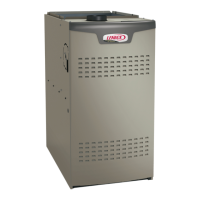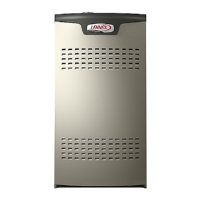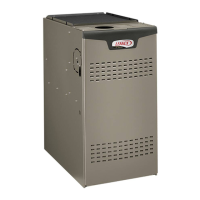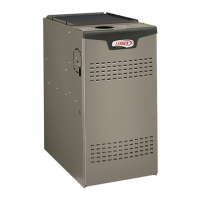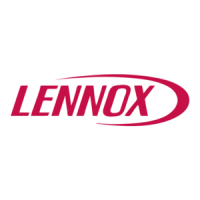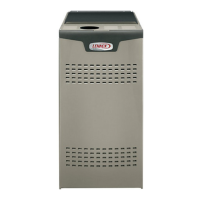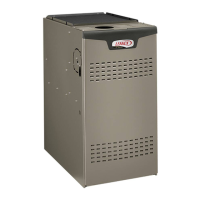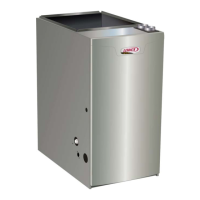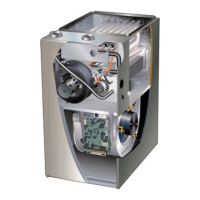Page 6
Safety Precautions
If you discover any of the following, shut down your
unit, and contact a Lennox dealer for an inspection by
a licensed professional service technician (or equiva
lent).
D If you repeatedly hear any new or unfamiliar sounds
while your unit is operating, there may be a problem. For
example, poorly performing burners can produce unfa
miliar noises.
D If you smell any unusual odors, your unit may be operat
ing improperly. For example, units can give off unfamil
iar odors if components are required to operate in ab
normal conditions.
D Look for visible signs of a malfunctioning unit. Examples
include unusual amounts of condensate on windows in
side your house, visibly burnt components or unusual
dirt or rust accumulations on the vent pipe or in the unit.
D If you experience headache, nausea, fatigue, or dizzi
ness, the cause could be exposure to carbon monoxide
gas. This is often misdiagnosed as the flu because
symptoms are similar. If you suffer from flu-like symp
toms that are exaggerated at home, but seem to sub
side while you are away from the house, exposure to
carbon monoxide could be the cause.
Your vigilance may pay off in early detection of a problem
before either personal injury or property damage occurs.
Do not hesitate to contact a qualified service technician as
an investment in your well being.
WARNING
Do not use this furnace if any part has been underwa
ter. A flood-damaged furnace is extremely danger
ous. Attempts to use the furnace can result in fire or
explosion. Immediately call a licensed professional
service technician (or equivalent) to inspect the fur
nace and to replace all gas controls, control system
parts, and electrical parts that have been wet or to re
place the furnace, if deemed necessary.
Planned Service
Annual Furnace Maintenance
At the beginning of each heating season, and to comply
with the Lennox Limited Warranty, your system should
be checked as follows by a licensed professional service
technician (or equivalent).
1- Check wiring for loose connections, voltage at indoor
unit and amperage of indoor motor
.
2- Check the condition of the belt and shaft bearings if ap
plicable.
3- Inspect all gas pipe and connections for leaks
.
4- Check the cleanliness of filters and change if necessary
(monthly).
5- Check the condition and cleanliness of burners and
heat exchanger and clean if necessary.
6- Check the cleanliness of blower assembly and clean
the housing, blower wheel and blower motor if neces
sary
.
7- Inspect the combustion air inducer and clean if neces
sary.
8- Evaluate the heat exchanger integrity by inspecting the
heat exchanger per the AHRI heat exchanger inspec
tion procedure. This procedure can be viewed at
www.ahrinet.org
9- Ensure sufficient combustion air is available to the fur
nace. Fresh air grilles and louvers (on the unit and in the
room where the furnace is installed) must be properly
sized, open and unobstructed to provide combustion
air
.
10 Inspect the furnace venting system to make sure it is in
place, structurally sound, and without holes, corrosion,
or blockage. Vent system must be free and clear of ob
structions and must slope upward away from the fur
nace
. Vent system should be installed per the National
Fuel Gas Code
11 Inspect the furnace return air duct connection to ensure
the duct is sealed to the furnace. Check for air leaks on
supply and return ducts and seal where necessary
.
12 Check the condition of the furnace cabinet insulation
and repair if necessary.
13 Perform a complete combustion analysis during the fur
nace inspection to ensure proper combustion and oper
ation. Consult Service Literature for proper combustion
values.
14 Verify operation of CO detectors and replace batteries
as required.
Perform a general system test. Turn on the furnace to
check operating functions such as the start-up and shut-off
operation.
1 - Check the operation of the ignition system, inspect
and clean flame sensor. Check microamps before and
after. Check controls and safety devices (gas valve,
flame sensor, temperature limits). Consult Service
Manual for proper operating range. Thermal Limits
should be checked by restricting airflow and not dis
connecting the indoor blower. For additional details,
please see Service and Application Note H049.
2 - Verify that system total static pressure and airflow set
tings are within specific operating parameters.
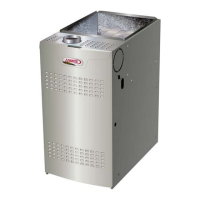
